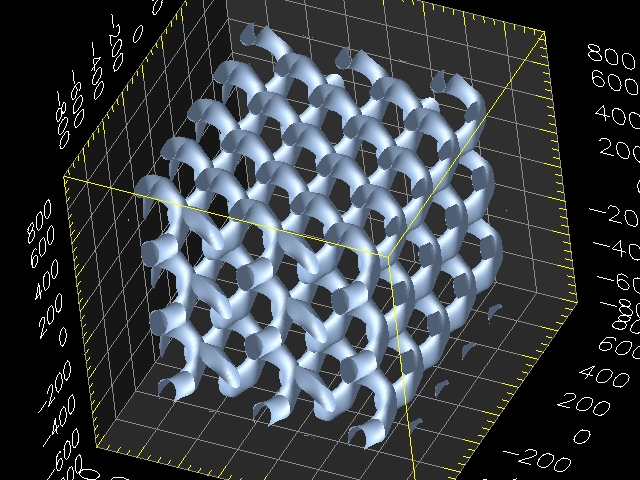Tunneling is generally regarded as a quantum phenomenon. For example, electrons can tunnel through a thin insulating barrier. Electromagnetic waves can also tunnel through gaps. In collaboration with University of Manitoba’s Prof. John Page, we have demonstrated for the first time that sound waves can also exhibit tunneling [1,2]. This was done by first constructing a photonic crystal consisting of tungsten carbide spheres (0.8 mm in diameter) arranged in face-centered-cubic crystalline structure. The whole structure was placed in water. A photonic bandgap is predicted through first-principles calculation with the mid-gap frequency of ~0.8 megahertz. Sound transmission along the [111] direction of the crystal was measured. It was seen that the measured transit time of a sonic wavepacket, with its dominant frequency in the gap regime, can be even shorter than that predicted for tungsten carbide (of similar thickness) when the photonic crystal is more than 8 mm thick. This can be explained by the fact that tunneling is essentially governed by the uncertainty principle, so the transit time across the barrier should be independent of its thickness (although the magnitude of the transmitted pulse packet decreases exponentially with thickness). For thick barrier it means an extremely “fast” propagation. This has indeed been confirmed experimentally. However, there are intrinsic differences between electron tunneling and the tunneling of sound, which was also observed.
Key Publications:
- “Ultrasound Tunneling through 3D Phononic Crystals”, S. Yang, J. H. Page, Z. Y. Liu, M. L. Cowan, C. T. Chan and P. Sheng, Phys. Rev. Lett. 88, 104301 (2002).
- “The Sound of Silence”, Nature Physics Portal, March 4, 2002.

